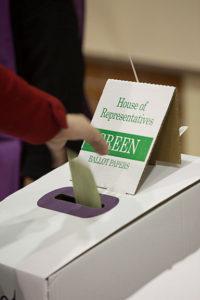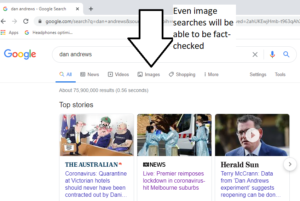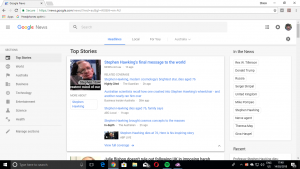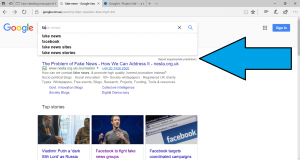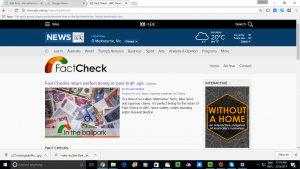Article
Astroturfing more difficult to track down with social media – academic | RNZ News
My Comments
An issue that is raised in the context of fake news and disinformation is a campaign tactic known as “astroturfing”. This is something that our online life has facilitated thanks to easy-to-produce Websites on affordable Web-hosting deals along with the Social Web.
I am writing about this on HomeNetworking01.info due to astroturfing as another form of disinformation that we are needing to be careful of in this online era.
What is astroturfing?
Astroturfing is organised propaganda activity intended to create a belief of popular grassroots support for a viewpoint in relationship to a cause or policy. This activity is organised by one or more large organisations with it typically appearing as the output of concerned individuals or smaller community organisations such as a peak body for small businesses of a kind.
But there is no transparency about who is actually behind the message or the benign-sounding organisations advancing that message. Nor is there any transparency about the money flow associated with the campaign.
The Merrian-Webster Dictionary which is the dictionary of respect for the American dialect of the English language defines it as:
organized activity that is intended to create a false impression of a widespread, spontaneously arising, grassroots movement in support of or in opposition to something (such as a political policy) but that is in reality initiated and controlled by a concealed group or organization (such as a corporation).
The etymology for this word comes about as a play on words in relation to the “grassroots” expression. It alludes to the Astroturf synthetic turf implemented initially in the Astrodome stadium in Houston in the USA., with the “Astroturf” trademark becoming a generic trademark for synthetic sportsground turf sold in North America.
This was mainly practised by Big Tobacco to oppose significant taxation and regulation measures against tobacco smoking, but continues to be practised by entities whose interests are against the public good.
How does astroturfing manifest?
It typically manifests as one or more benign-sounding community organisations that appear to demonstrate popular support for or against a particular policy. It typically affects policies for the social or environmental good where there is significant corporate or other “big-money” opposition to these policies.
The Internet era has made this more feasible thanks to the ability to create and host Websites for cheap. As online forums and social media came on board, it became feasible to set up multiple personas and organisational identities on forums and social-media platforms to make it appear as though many people or organisations are demonstrating popular support for the argument. It is also feasible to interlink Websites and online forums or Social-Web presences by posting a link from a Website or blog in a forum or Social-Web post or having articles on a Social Web account appear on one’s Website.
The multiple online personas created by one entity for this purpose of demonstrating the appearance of popular support are described as “sockpuppet” accounts. This is in reference to children’s puppet shows where two or three puppet actors use glove puppets made out of odd socks and can manipulate twice the number of characters as each actor. This can happen synchronously with a particular event that is in play, be it the effective date of an industry reform or set of restrictions; a court case or inquiry taking place; or a legislature working on an important law.
An example of this that occurred during the long COVID-19 lockdown that affected Victoria last year where the “DanLiedPeopleDied” and “DictatorDan” hashtags were manipulated on Twitter to create a sentiment of popular distrust against Dan Andrews. Here it was identified that a significant number of the Twitter accounts that drove these hashtags surfaced or changed their behaviour synchronously to the lockdown’s effective period.
But astroturfing can manifest in to offline / in-real-life activities like rallies and demonstrations; appearances on talkback radio; letters to newspaper editors, pamphlet drops and traditional advertising techniques.
Let’s not forget that old-fashioned word-of-mouth advertising for an astroturfing campaign can take place here like over the neighbour’s fence, at the supermarket checkout or around the office’s water cooler.
Sometimes the online activity is used to rally for support for one or more offline activities or to increase the amount of word-of-mouth conversation on the topic. Or the pamphlets and outdoor advertising will carry references to the campaign’s online resources so people can find out more “from the horse’s mouth”. This kind of material used for offline promotion can be easily and cheaply produced using “download-to-print” resources, print and copy shops that use cost-effective digital press technology, firms who screen-print T-shirts on demand from digital originals amongst other online-facilitated technologies.
An example of this highlighted by Spectrum News 1 San Antonio in the USA was the protest activity against COVID-19 stay-at-home orders in that country. This was alluding to Donald Trump and others steering public opinion away from a COVID-safe USA.
This method of deceit capitalises on popular trust in the platform and the apparently-benign group behind the message or appearance of popular support for that group or its message. As well, astroturfing is used to weaken any true grassroots support for or against the opinion.
How does astroturfing affect media coverage of an issue?
The easily-plausible arguments tendered by a benign-sounding organisation can encourage journalists to “go with the flow” regarding the organisation’s ideas. It can include treating the organisation’s arguments at face value for a supporting or opposing view on the topic at hand especially where they want to create a balanced piece of material.
This risk is significantly increased in media environments where there isn’t a culture of critical thinking with obvious examples being partisan or tabloid media. Examples of this could be breakfast/morning TV talk shows on private free-to-air TV networks or talkback radio on private radio stations.
But there is a greater risk of this occurring while there is increasingly-reduced investment in public-service and private news media. Here, the fear of newsrooms being reduced or shut down or journalists not being paid much for their output can reduce the standard of journalism and the ability to perform proper due diligence on news sources.
There is also the risk of an astroturfing campaign affecting academic reportage of the issue. This is more so where the student doesn’t have good critical-thinking and research skills and can be easily swayed by spin. It is more so with secondary education or some tertiary education situations like vocational courses or people at an early stage in the undergraduate studies.
How does astroturfing affect healthy democracies
All pillars of government can and do fall victim to astroturfing. This can happen at all levels of government ranging from local councils through state or regional governments to the national governments.
During an election, an astroturfing campaign can be used to steer opinion for or against a political party or candidate who is standing for election. In the case of a referendum, it can steer popular opinion towards or against the questions that are the subject of the referendum. This is done in a manner to convey the veneer of popular grassroots support for or against the candidate, party or issue.
The legislature is often a hotbed of political lobbying by interest groups and astroturfing can be used to create a veneer of popular support for or against legislation or regulation of concern to the interest group. As well, astroturfing can be used a a tool to place pressure on legislature members to advance or stall a proposed law and, in some cases, force a government out of power where there is a stalemate over that law.
The public-service agencies of the executive government who have the power to permit or veto activity are also victims of astroturfing. This comes in the form of whether a project can go ahead or not; or whether a product is licensed for sale within the jurisdiction. It can also affect the popular trust in any measures that officials in the executive government execute.
As well, the judiciary can be tasked with handling legal actions launched by pressure groups who use astroturfing to create a sense of popular support to revise legislation or regulation. It also includes how jurors are influenced in any jury trial or which judges are empanelled in a court of law, especially a powerful appellate court or the jurisdiction’s court of last resort.
Politicians, significant officials and key members of the judiciary can fall victim to character assassination campaigns that are part of one or more astroturfing campaigns. This can affect continual popular trust in these individuals and can even affect the ability for them to live or conduct their public business in safety.
Here, politicians and other significant government officials are increasingly becoming accessible to the populace. It is being facilitated by themselves maintaining Social-Web presence using a public-facing persona on the popular social-media platforms, with the same account-name or “handle” being used on the multiple platforms. In the same context, the various offices and departments maintain their social-Web presence on the popular platforms using office-wide accounts. This is in addition to other online presences like the ministerial Web pages or public-facing email addresses they or the government maintain.
These officials can be approached by interest groups who post to the official’s Social-Web presence. Or a reference can be created to the various officials and government entities through the use of hashtags or mentions of platform-native account names operated by these entities when someone creates a Social Web post about the official or issue at hand. In a lot of cases, there is reference to sympathetic journalists and media organisations in order to create media interest.
As well, one post with the right message and the right mix of hashtags and referenced account names can be viewed by the targeted decision makers and the populace at the same time. Then people who are sympathetic to that post’s message end up reposting that message, giving it more “heat”.
Here, the Social Web is seen as providing unregulated access to these powerful decision-makers. That is although the decision-makers work with personal assistants or similar staff to vet content that they see. As well, there isn’t any transparency about who is posting the content that references these officials i.e. you don’t know whether it is a local constituent or someone pressured by an interest group.
What can be done about it
The huge question here is what can be done about astroturfing as a means of disinformation.
A significant number of jurisdictions implement attribution requirements for any advertising or similar material as part of their fair-trading, election-oversight, broadcasting, unsolicited-advertising or similar laws. Similarly a significant number of jurisdictions implement lobbyist regulation in relationship to who has access to the jurisdiction’s politicians. As outlined in the RNZ article that I referred to, New Zealand is examining astroturfing in the context of whether they should regulate access to their politicians.
But most of these laws regulate what goes on within the offline space within the jurisdiction that they pertain to. It could become feasible for foreign actors to engage in astroturfing and similar campaigns from other territories across the globe using online means without any action being taken.
The issue of regulating lobbyist access to the jurisdiction’s politicians or significant officials can raise questions. Here it could be about whether the jurisdiction’s citizens have a continual right of access to their elected government or not. As well, there is the issue of assuring governmental transparency and a healthy dialogue with the citizens.
The 2016 fake-news crisis which highlighted the distortion of the 2016 US Presidential Election and UK Brexit referendum became a wake-up call regarding how the online space can be managed to work against disinformation.
Here, Silicon Valley took on the task of managing online search engines, social-media platforms and online advertising networks to regulate foreign influence and assure accountability when it comes to political messaging in the online space. This included identity verification of advertiser accounts or keeping detailed historical records of ads from political advertisers on ad networks or social media or clamping down on coordinated inauthentic behaviour on social media platforms.
In addition to this, an increasingly-large army of “fact-checkers” organised by credible newsrooms, universities and similar organisations appeared. These groups researched and verified claims which were being published through the media or on online platforms and would state whether they are true or false based on their research.
What we can do is research further and trust our instincts when it comes to questionable claims that come from apparently-benign organisations. Here we can do our due diligence and check for things like how long an online account has been in operation for, especially if it is synchronous to particular political, regulatory or similar events occurring or being on the horizon.
Here you have to look out for behaviours in the online or offline content like:
- Inflammatory or manipulative language that plays on your emotions
- Claims to debunk topic-related myths that aren’t really myths
- Questioning or pillorying those exposing the wrongdoings core to the argument rather the actual wrongdoings
- A chorus of the same material from many accounts
Conclusion
We need to be aware of astroturfing as another form of disinformation that is prevalent in the online age. Here it can take in people who are naive and accept information at face value without doing further research on what is being pushed.


